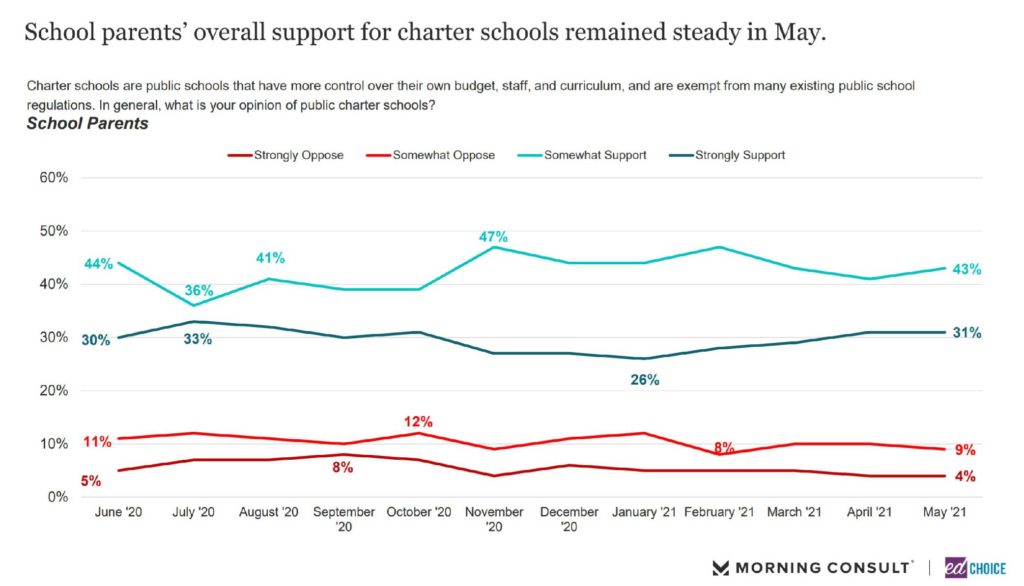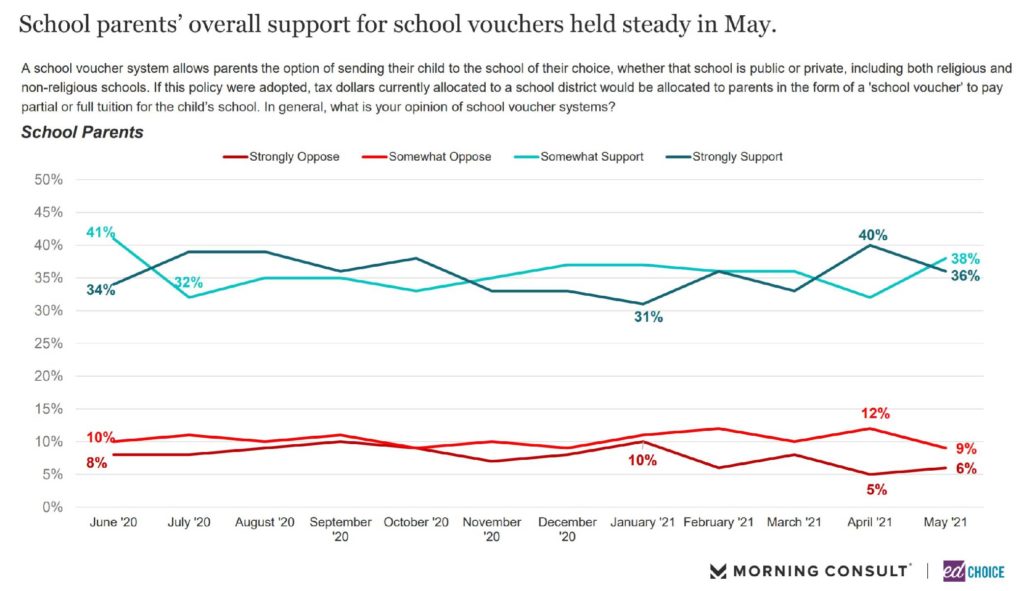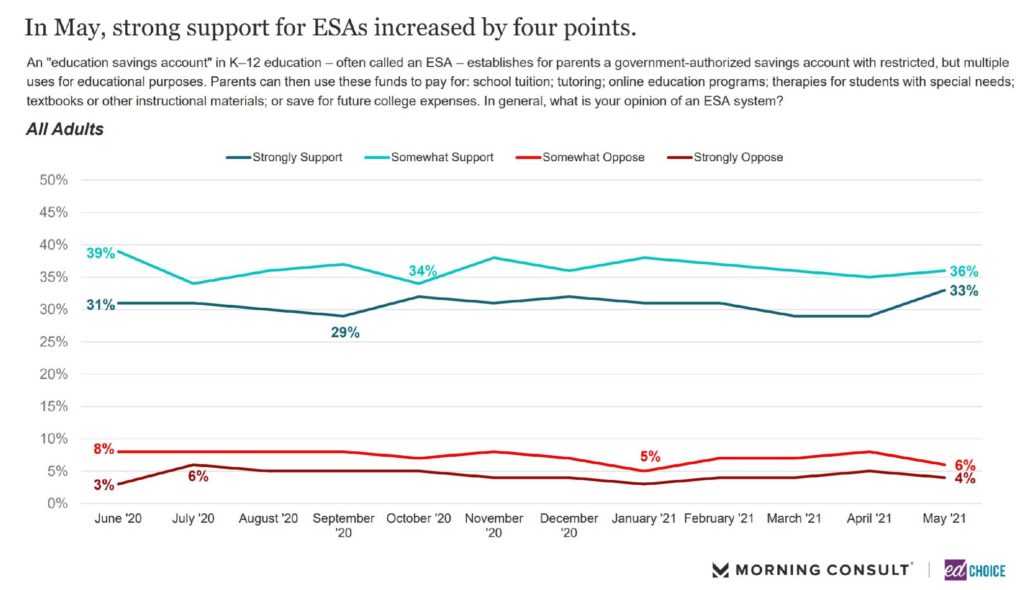EdChoice Public Opinion Tracker: Top Takeaways May 2021
With the 2020-21 academic year over, education decisionmakers across the country are evaluating what schooling should look like in the long-term. Some schools are innovating, and others seek a return to normal. Likewise, parents have had to adapt to new schooling formats over the course of the pandemic, and some are using their experiences to rethink how to best help their children learn.
With this backdrop, we surveyed a nationally representative sample of Americans adults aged 18 and over (N = 2,200 American adults, in the field May 7-20) on a variety of questions regarding K-12 education, COVID-19, public education institutions, and more. With additional sampling, we obtained responses from a total of 1,166 parents of school-aged children so we can report more reliable information about parent subgroups by demographic.
In a nutshell: Optimism about the K-12 education system appears to have stabilized after a steady climb through the early months of 2021. Parents continue to vocalize favor toward flexible and alternative forms of education, including hybrid schooling and learning pods. Schools have about the right amount of focus on standardized testing, parents are most likely to say, but policies around those tests could use reform. School choice remains overwhelmingly positive, with about three-quarters of parents indicating support for charters, vouchers, and education savings accounts, otherwise known as ESA
1. Optimism has stabilized. Since the beginning of 2021, school parents and other American adults have grown more optimistic about the direction of K-12 education locally, statewide, and nationally. For all three geographic categories, the share of people who responded positively was slightly higher in May than it was in March 2020, with one slight exception of all adults’ opinion on local education.
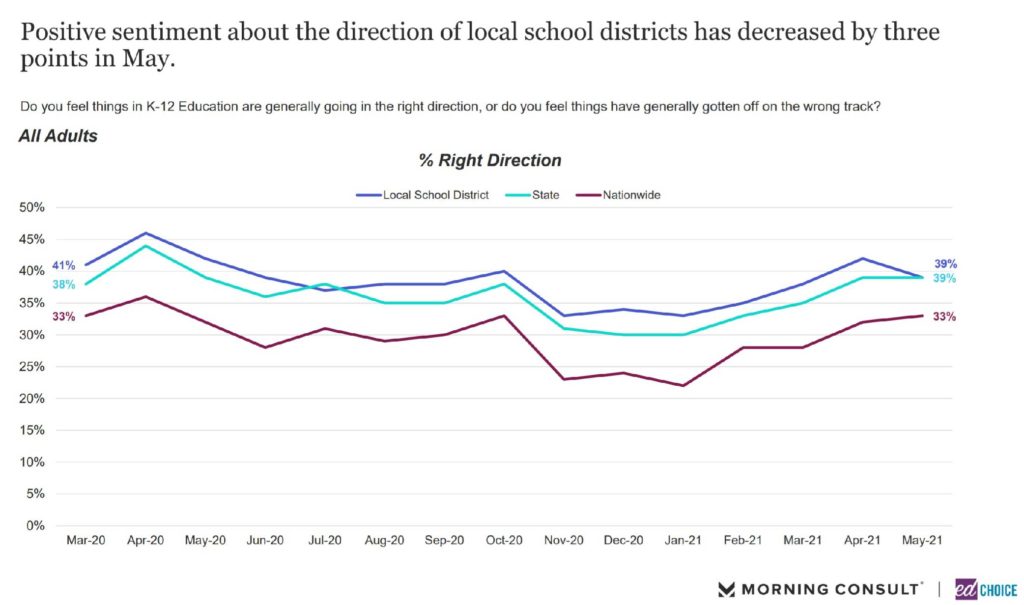
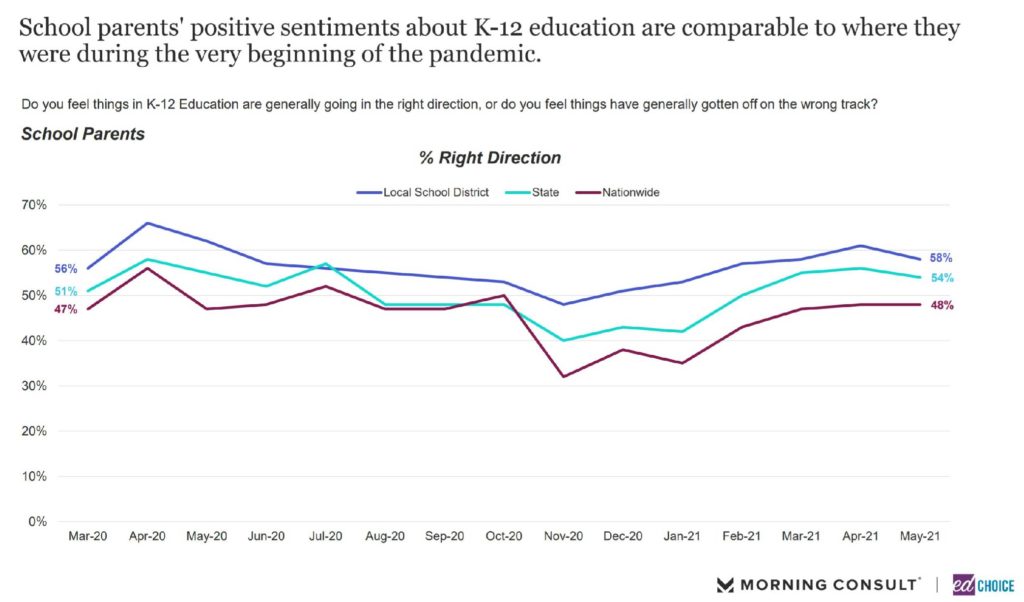
For the third consecutive month, there was a new low in the share of people reporting the pandemic as being very disruptive to themselves, their families, or their communities. Perception of disruption appears to be declining for personal and household routines slightly faster than for people’s communities.
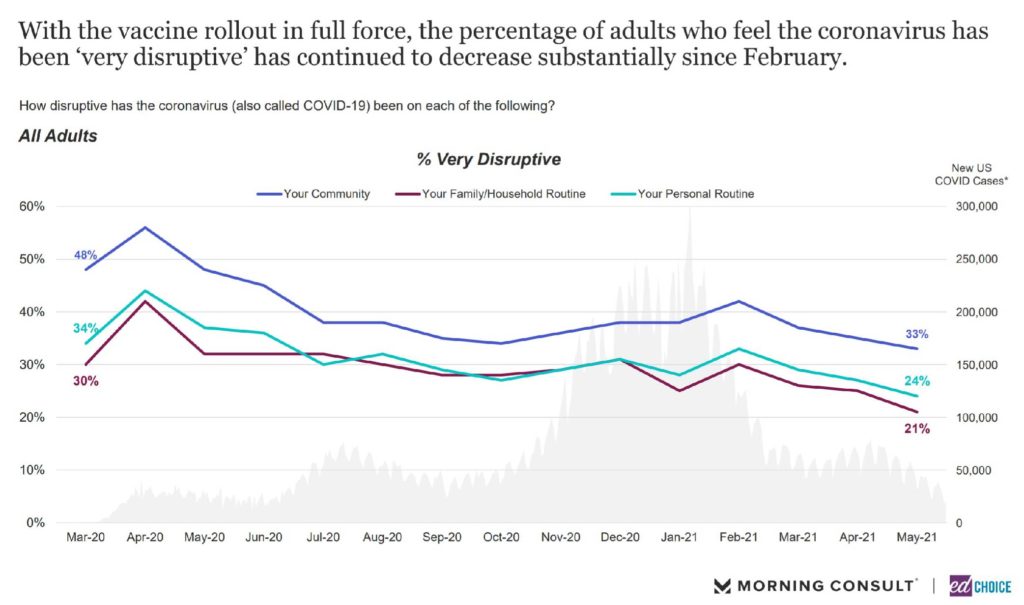
After four months of rapid growth, the share of parents at least somewhat comfortable with their children returning to classrooms increased by one percentage point from April to May, now sitting at 65 percent. Parents “very” comfortable with in-person education continue to exceed parents “somewhat” comfortable.
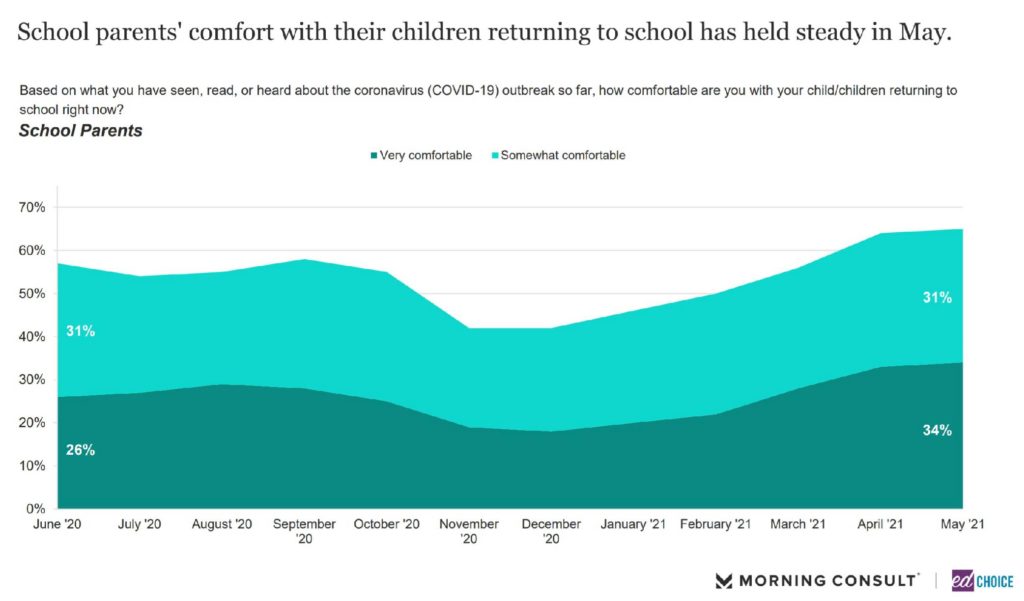
2. Demand for flexible learning options in the long-term remains high. Even after the pandemic and its concerns are over, parents who would prefer all schooling return to in-person are a minority. In May, 32 percent of parents preferred all five days of instruction to take place outside the home—11 percentage points lower than in March. Parents were more likely to want two to three school days take place at home, with 38 percent of parents indicating a preference for that range.
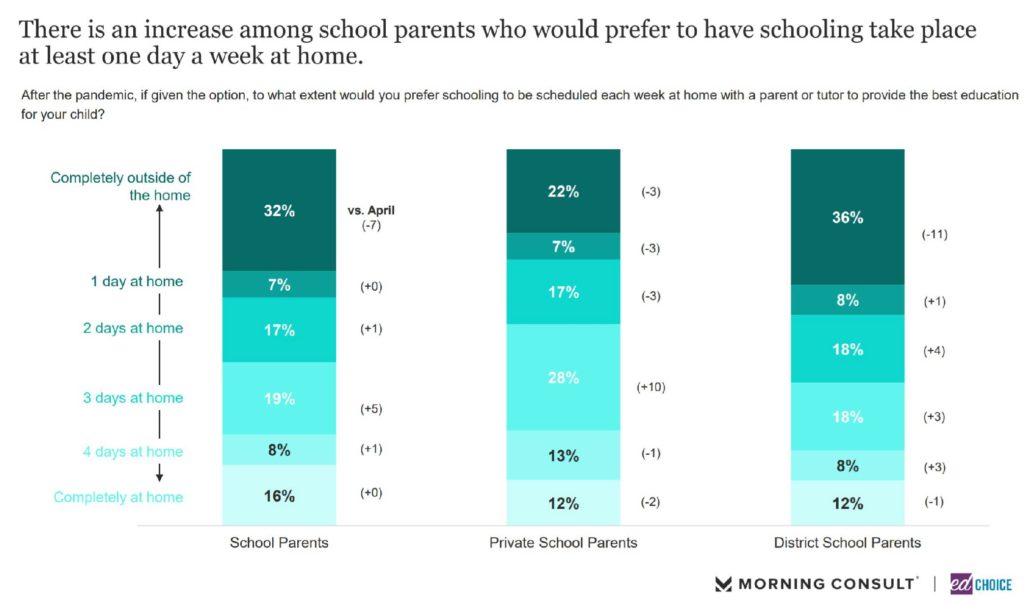
Two-thirds of parents think schools should offer multiple learning options in the coming school year, indicating some desire for flexibility or for other families to have choice in how their children receive schooling in the fall.
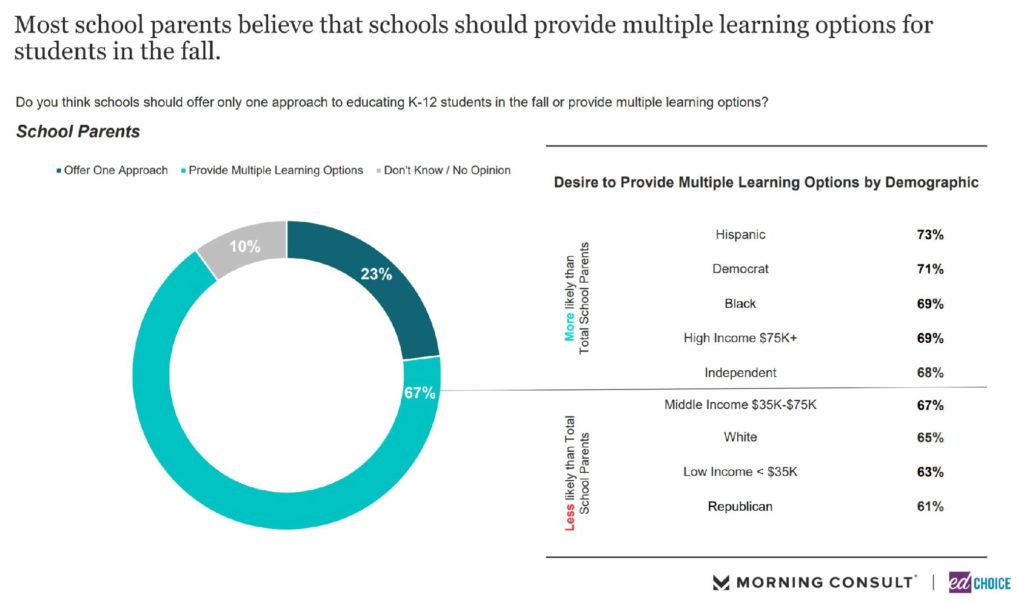
3. Pods and tutoring are still highly desired, especially among Black and Hispanic parents. As in April, about two-fifths of parents continue to report participating in or a desire to participate in a learning pod. Learning pods were very popular in the fall, with 47 percent of parents saying they were in or wanted to be in a pod in August. That number peaked at 55 percent in October before dropping to the mid-30s from November through February. Combined pod interest and participation has exceeded 40 percent for two consecutive months.
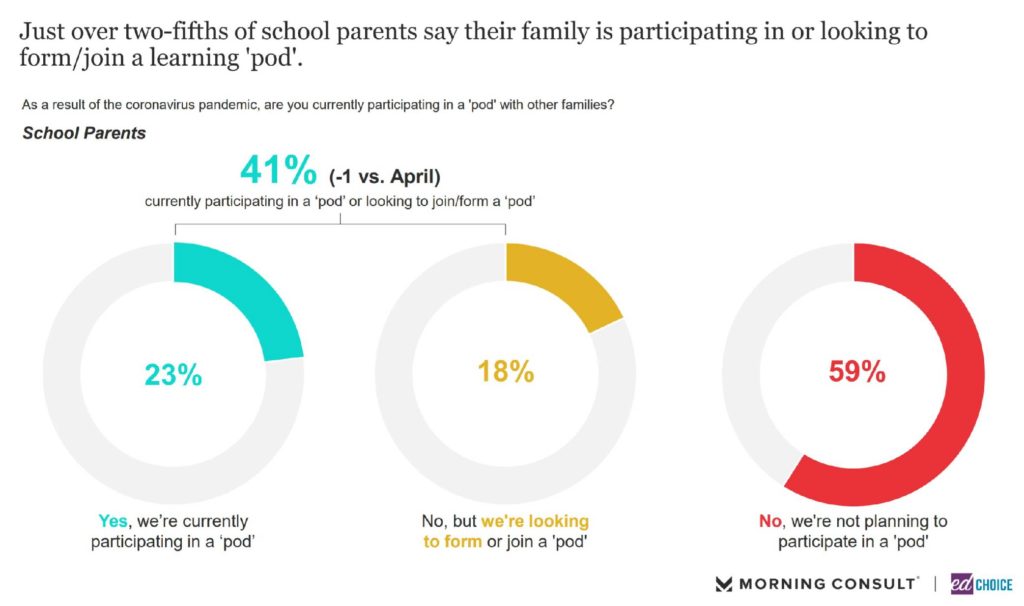
Pods are most popular among private school parents, parents in urban locales, Hispanic parents, and Black parents. Low-income families and those in rural and small towns are least likely to be or want to be involved in a pod.
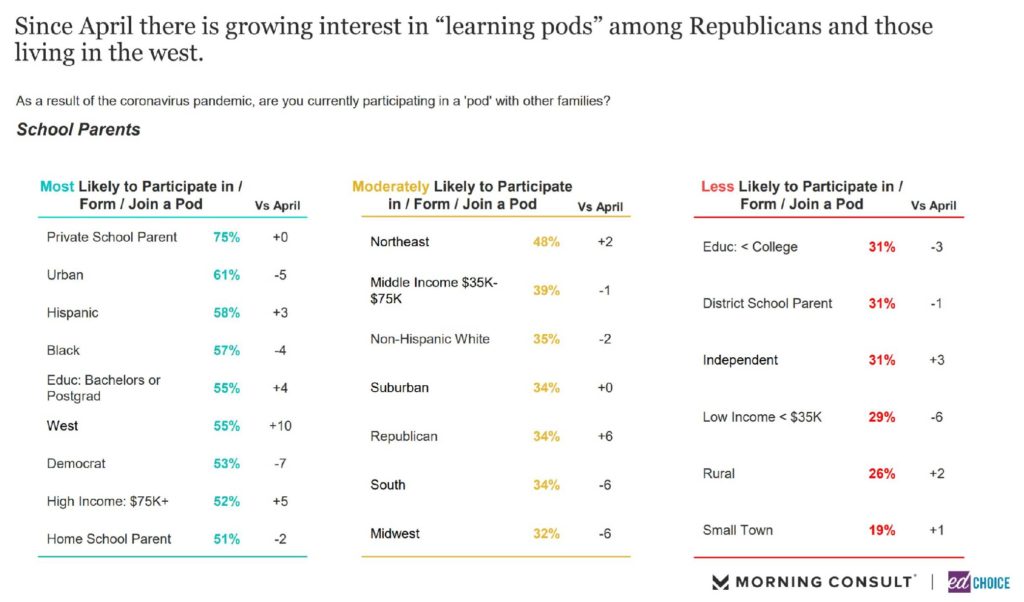
The amount of money parents were willing to pay to participate in a pod has grown rapidly since 2021 began. In January, the average pod-inclined parent said they would be willing to pay $423 per child per month to enroll. That number soared to $592 per child per month in April, nearly a 40 percent jump. In May, willingness to pay for pods lessened somewhat, dropping to an average of $503 per child per month.
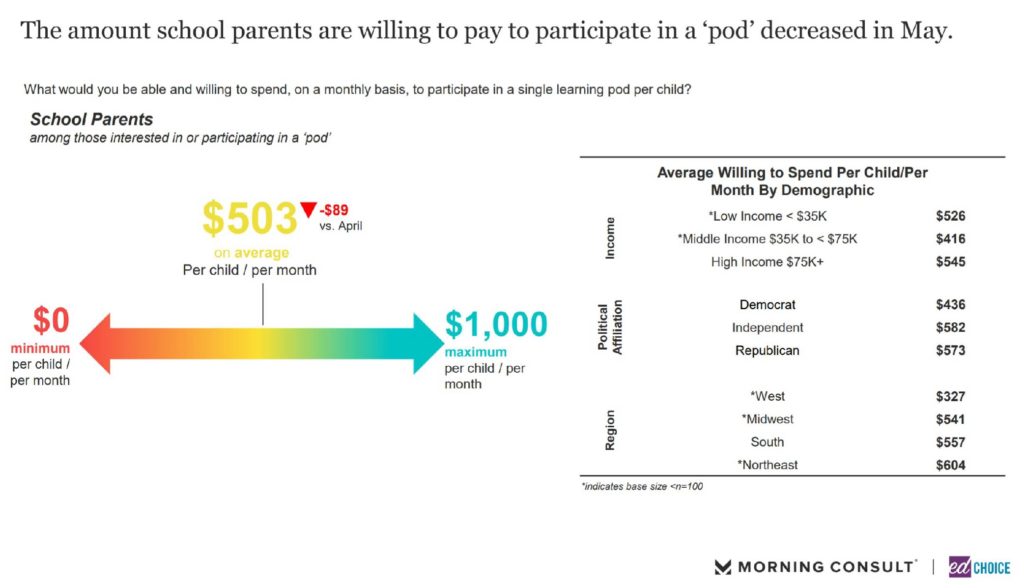
Consistently, the vast majority of pod-inclined parents say they view pods as supplemental to their children’s education rather than a substitute for “regular” schooling. Another method of supplemental education, tutoring, grew slightly more popular among parents from April to May. Just over one in five parents said their children are currently receiving tutoring, and another 28 percent say they are interested in finding tutoring for their children.
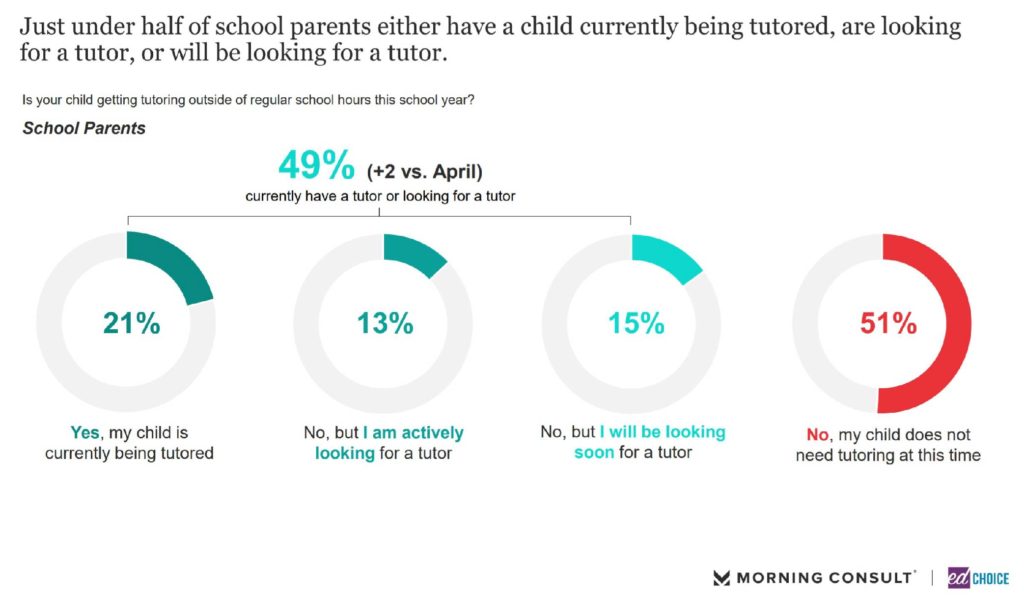
As with pods, tutoring is most desirable among private school parents, parents in urban locales, Hispanic parents, and Black parents, with at least roughly two-thirds of parents in those categories interested in tutoring services.
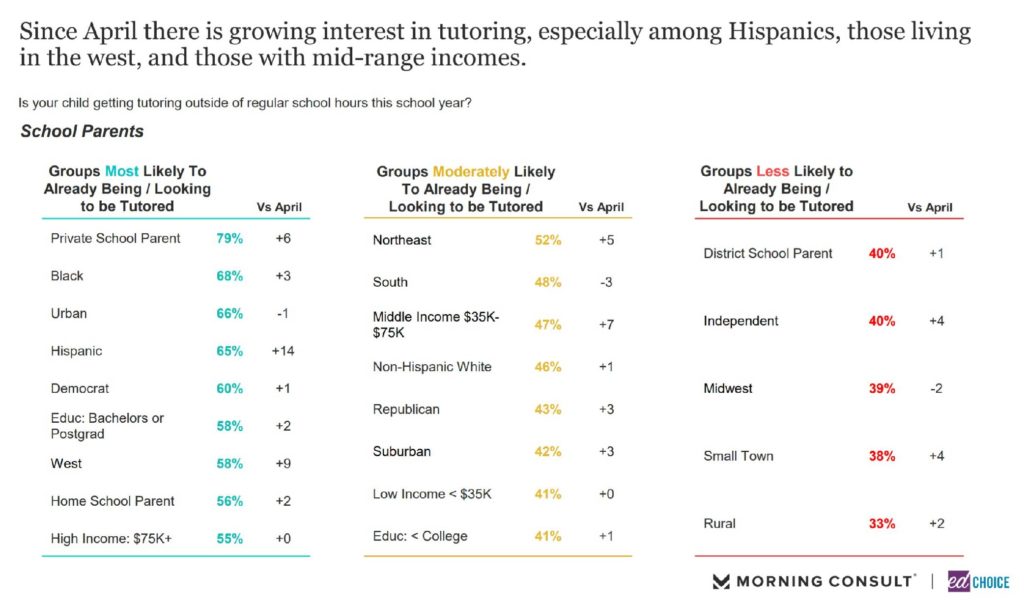
Parents’ willingness to pay for tutoring has consistently been lower than that of pods, but unlike pods, the average amount parents were willing to pay jumped 48 percent from April to May.
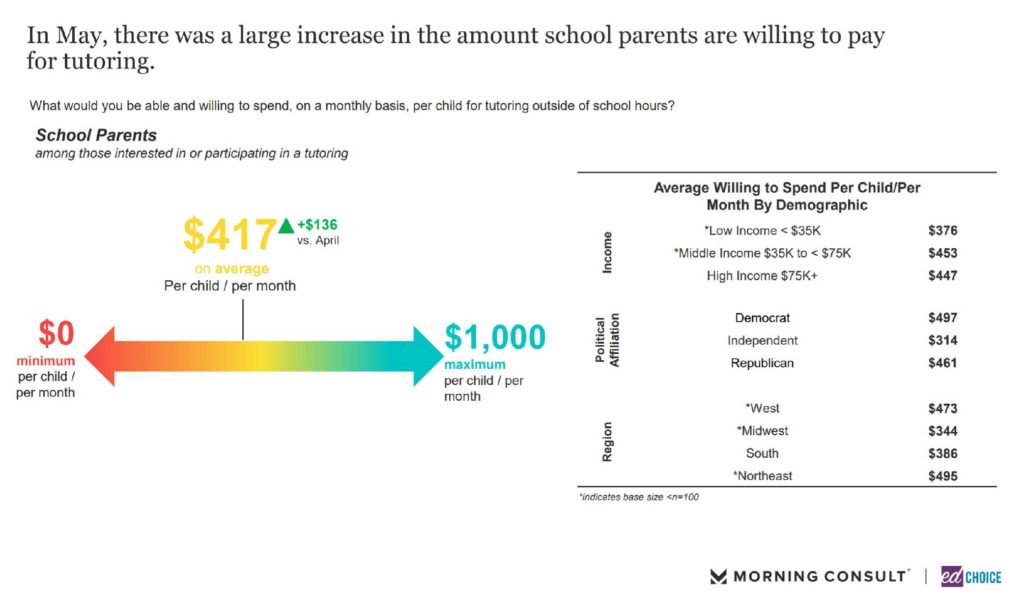
4. Opinions on standardized testing remained stable from April to May. The share of parents who think schools spend too much time focusing on standardized testing has rested just below 30 percent for three consecutive months, while parents who think time spent on testing is about right remains at 43 percent, its highest percentage of the year.
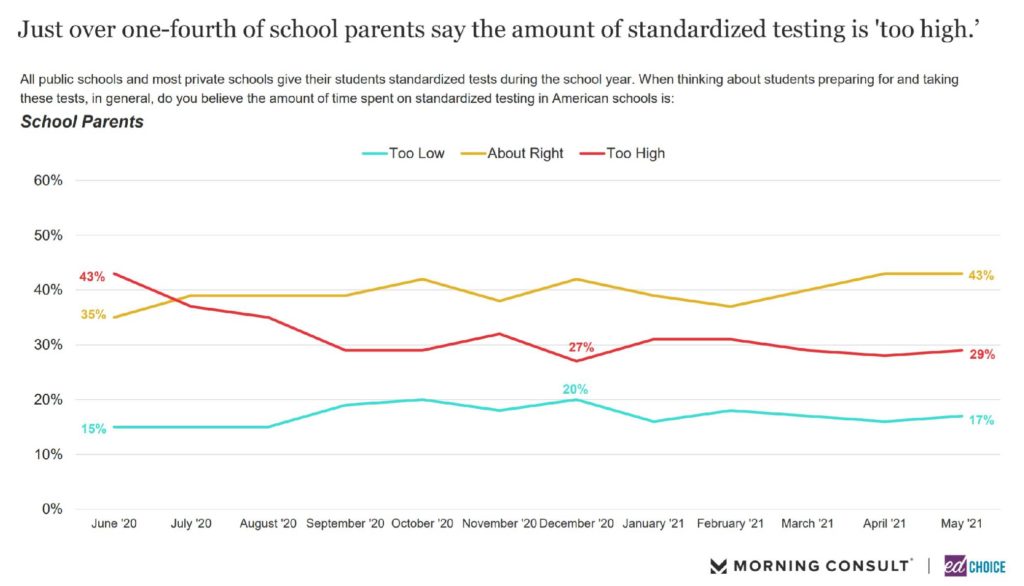
Most parents were in favor of some policy reform related to the administration of standardized testing this year, however. Parents were extremely in favor of seeing test results, with well over half strongly supporting such a policy. More than seven out of 10 parents would like standardized tests shortened and the window to take them expanded. Seven out of 10 parents also supported applying test-based accountability measures to schools and districts.
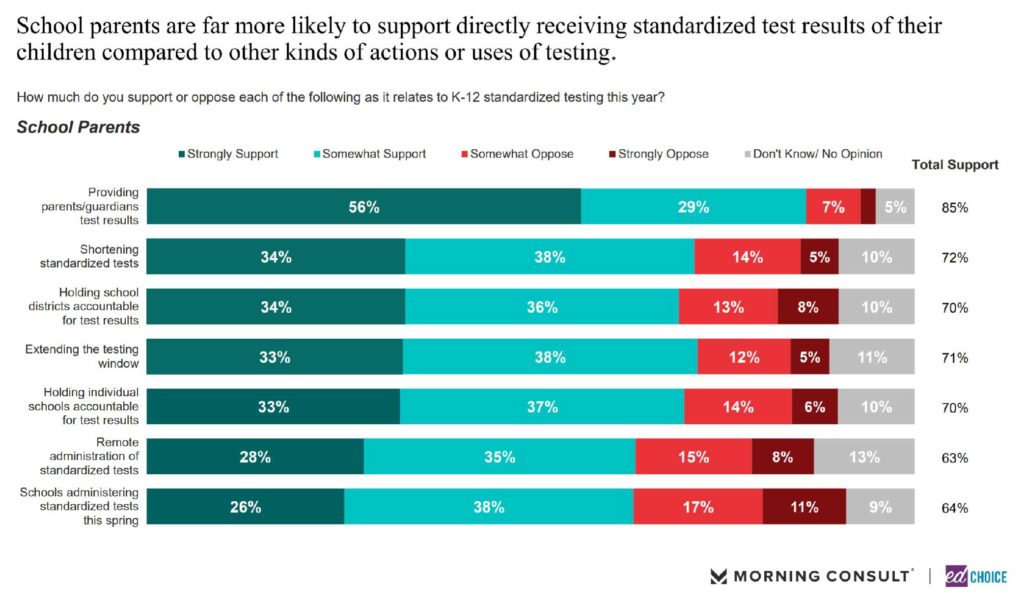
5. Three major school choice policies remain very popular. About three-quarters of parents support charter schools, private school vouchers, and education savings accounts (ESAs). Vouchers and ESAs saw notable jumps in popularity over the last month.
